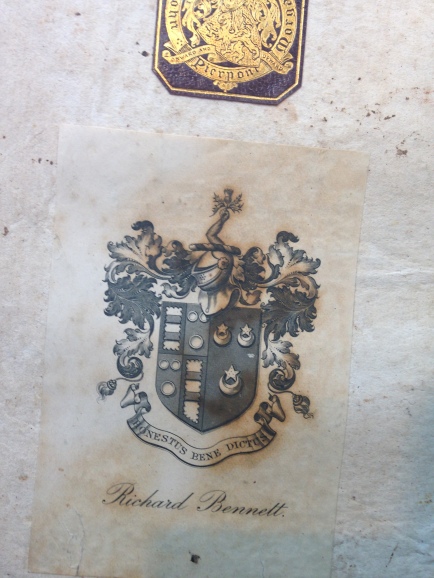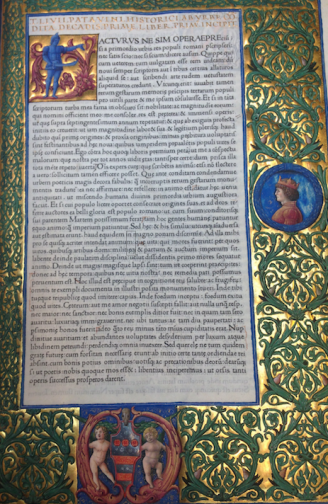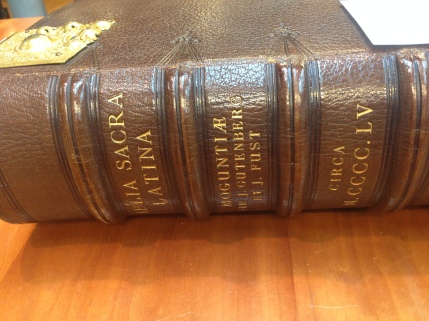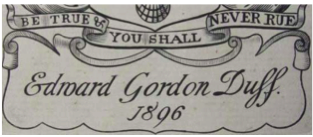Thanks to Maria Fredericks and colleagues at the Thaw Conservation Centre, and in conjunction with printed book curator John McQuillen, we spent the best part of a day collecting data from the incredibly rich collection of printed parchment books at the Morgan.
Many of the volumes which formed the nucleus of the Morgan collection actually came via Greater Manchester when purchased in 1902 from Richard Bennett, a Bolton-based industrialist with interests in industrial chemistry and bleaching. A couple of year’s previously Bennett had purchased the library of William Morris, who himself had a working interest in printing texts on parchment. So it came as a real treat to be able to sample a parchment copy of the 1907 Morgan catalogue of Morris and Bennett’s collection, part of which was compiled by E. Gordon Duff, the first librarian of the Rylands Collection. Amongst the volumes examined was Vindelinus de Spira’s stunning 1470 edition of Livy’s, Ab urbe condita. Whilst the first quire is in manuscript and written in gold and blue script, the first printed page is richly and skilfully decorated.
Amongst the volumes examined was Vindelinus de Spira’s stunning 1470 edition of Livy’s, Ab urbe condita. Whilst the first quire is in manuscript and written in gold and blue script, the first printed page is richly and skilfully decorated. Pride of place, however, had to go to the Morgan’s two volumes of the Gutenberg Bible on parchment. To be able to add this landmark publication to the data collected from the Indulgences and other early Mainz printings held at the Rylands was memorable in itself.
Pride of place, however, had to go to the Morgan’s two volumes of the Gutenberg Bible on parchment. To be able to add this landmark publication to the data collected from the Indulgences and other early Mainz printings held at the Rylands was memorable in itself. Whilst we might regret Mrs Ryland’s declining the Bennett Collection, we’d like to think that E. Gordon Duff, whatever his abilities as a cataloguer, would have been pleased to know that over 100 years later others had made the trip from Manchester to Manhattan to examine one of his own passions: early printed parchment books.
Whilst we might regret Mrs Ryland’s declining the Bennett Collection, we’d like to think that E. Gordon Duff, whatever his abilities as a cataloguer, would have been pleased to know that over 100 years later others had made the trip from Manchester to Manhattan to examine one of his own passions: early printed parchment books.  As the beautiful plaque that bears the quote of the English connoisseur Jonathan Richardson (1667-1745) reminds those working there; any librarian, scholar, curator, and conservator worth their salt starts with a love and care for the material objects they care for and study.
As the beautiful plaque that bears the quote of the English connoisseur Jonathan Richardson (1667-1745) reminds those working there; any librarian, scholar, curator, and conservator worth their salt starts with a love and care for the material objects they care for and study.
